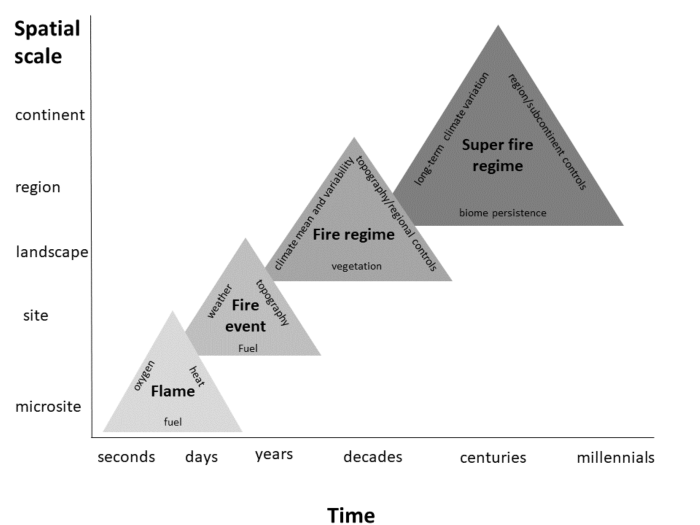Fire Ecology
Fire Science & Ecology
'Wildfire' in California has a diversity of energy releases, ecological fire effects, and size because of our natural history and modern drivers. Wildfire regimes are influenced by basic physical characteristics of topography, vegetation, and their ignition. In addition, humans alter the structure of vegetation, the type of vegetation, and how start fires either by accident or on purpose.
All of these factors vary between and within California's regions, but there are common trends:
- Topography, especially steepness, influences how quickly a fire moves and how much energy is released by it. On steep slopes for example, fuels are preheated by the fire and burn more quickly with a larger energy release.
- Vegetation, especially dense vegetation or plants with highly flammable resins, also foster fires that move quickly and have large energy releases. People alter this by removing plants, plantings, or by allowing plants to grow through fire suppression.
- Ignitions occur by lightning and people. Lightning is frequent at higher elevations in California, and caused many of the wildfires here. Lighting is uncommon at lower elevations, and Native Americans historically ignited more of the fires in this region. Today people cause the majority of lower elevation fires.
- Wind
The wildfire history for 1,000s of years shaped the way that many plants and animals are adapted to fire. You can learn more the fire ecology of specific regions or understand fire history of each region below.
What is fire? Fire is a chemical reaction that occurs when fuel, oxygen, and heat interact.
What alters fire behavior? Fire behavior is guided by the topography, fuel, and weather.
What is a fire regime? Fire regimes described the characters of wildfire, including how frequently is burns, the fire size, the energy release of the fire, how it alters vegetation, and how wildfires interact with other factors like weather, insects, and disease.




